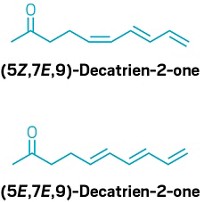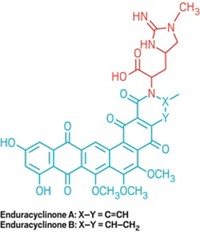Advertisement
Grab your lab coat. Let's get started
Welcome!
Welcome!
Create an account below to get 6 C&EN articles per month, receive newsletters and more - all free.
It seems this is your first time logging in online. Please enter the following information to continue.
As an ACS member you automatically get access to this site. All we need is few more details to create your reading experience.
Not you? Sign in with a different account.
Not you? Sign in with a different account.
ERROR 1
ERROR 1
ERROR 2
ERROR 2
ERROR 2
ERROR 2
ERROR 2
Password and Confirm password must match.
If you have an ACS member number, please enter it here so we can link this account to your membership. (optional)
ERROR 2
ACS values your privacy. By submitting your information, you are gaining access to C&EN and subscribing to our weekly newsletter. We use the information you provide to make your reading experience better, and we will never sell your data to third party members.
Biological Chemistry
New Method Pinpoints Synergistic Botanical Compounds
Natural Products: Researchers identify molecules in goldenseal that work together to kill bacteria
by Catherine M. Cooney
June 14, 2011

Botanical dietary supplements and medicines make up a multi-billion-dollar industry in the U.S., but scientists have had trouble proving their efficacy. Many supporters say these treatments succeed because of a phenomenon called synergy, in which many molecules together produce a combined medicinal effect more powerful than a sum of the effects of individual compounds. Now scientists have developed a method to identify synergistic compounds in botanicals (J. Nat. Prod., DOI: 10.1021/np200336g).

Goldenseal (Hydrastis canadensis) is a perennial herb in the buttercup family that is widely used to treat infections. Previous studies have shown that it has antibacterial activity, but scientists have yet to pinpoint all of its molecules that kill bacteria.
Scientists knew of one alkaloid in goldenseal called berberine that has weak antimicrobial activity. Nadja Cech at the University of North Carolina, Greensboro, and her colleagues wanted to find the synergistic compounds in this herb that helped berberine kill the bacterium Staphylococcus aureus.
The team developed a process they named “synergy directed fractionation” to isolate compounds that boosted berberine’s effectiveness. They first used flash chromatography and high-performance liquid chromatography to separate an extract of goldenseal leaves into fractions. They identified the molecules present in each fraction with electrospray ionization mass spectrometry. The researchers then added berberine to each fraction and tested whether the mixture killed S. aureus bacteria at greater rates than berberine did alone. They repeated the process until they narrowed the fractions down to three synergistic compounds called sideroxylin, 8-desmethyl-sideroxylin, and 6-desmethyl-sideroxylin.
Cech says that her study develops “a very careful, strategic approach that takes the guesswork out of identifying the synergistic compounds.” She hopes to use the method to study other botanicals and, eventually, to develop drugs to treat antibiotic-resistant infections.




Join the conversation
Contact the reporter
Submit a Letter to the Editor for publication
Engage with us on Twitter